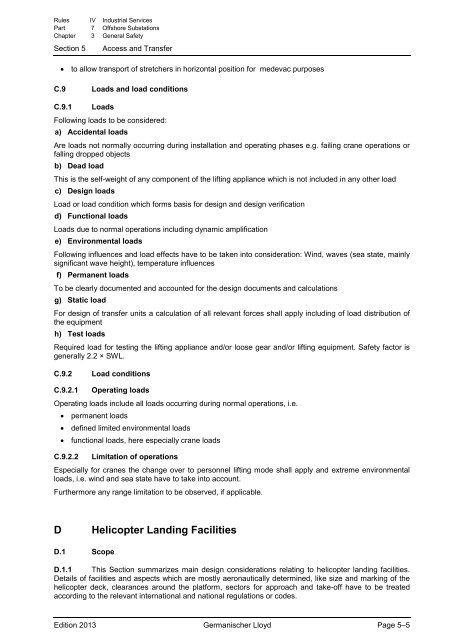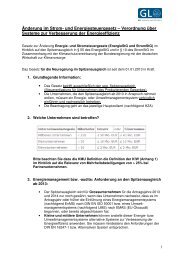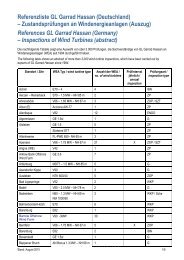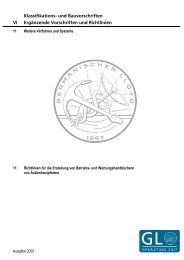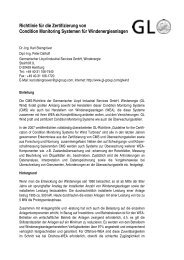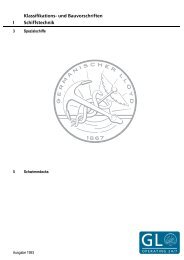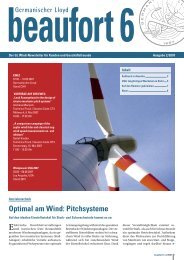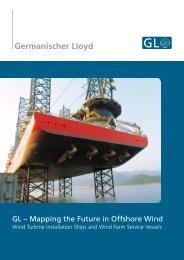(IV-7-3) General Safety
(IV-7-3) General Safety
(IV-7-3) General Safety
You also want an ePaper? Increase the reach of your titles
YUMPU automatically turns print PDFs into web optimized ePapers that Google loves.
Rules <strong>IV</strong> Industrial Services<br />
Part 7 Offshore Substations<br />
Chapter 3 <strong>General</strong> <strong>Safety</strong><br />
Section 5<br />
Access and Transfer<br />
• to allow transport of stretchers in horizontal position for medevac purposes<br />
C.9 Loads and load conditions<br />
C.9.1 Loads<br />
Following loads to be considered:<br />
a) Accidental loads<br />
Are loads not normally occurring during installation and operating phases e.g. failing crane operations or<br />
falling dropped objects<br />
b) Dead load<br />
This is the self-weight of any component of the lifting appliance which is not included in any other load<br />
c) Design loads<br />
Load or load condition which forms basis for design and design verification<br />
d) Functional loads<br />
Loads due to normal operations including dynamic amplification<br />
e) Environmental loads<br />
Following influences and load effects have to be taken into consideration: Wind, waves (sea state, mainly<br />
significant wave height), temperature influences<br />
f) Permanent loads<br />
To be clearly documented and accounted for the design documents and calculations<br />
g) Static load<br />
For design of transfer units a calculation of all relevant forces shall apply including of load distribution of<br />
the equipment<br />
h) Test loads<br />
Required load for testing the lifting appliance and/or loose gear and/or lifting equipment. <strong>Safety</strong> factor is<br />
generally 2.2 × SWL.<br />
C.9.2<br />
Load conditions<br />
C.9.2.1 Operating loads<br />
Operating loads include all loads occurring during normal operations, i.e.<br />
• permanent loads<br />
• defined limited environmental loads<br />
• functional loads, here especially crane loads<br />
C.9.2.2 Limitation of operations<br />
Especially for cranes the change over to personnel lifting mode shall apply and extreme environmental<br />
loads, i.e. wind and sea state have to take into account.<br />
Furthermore any range limitation to be observed, if applicable.<br />
D<br />
Helicopter Landing Facilities<br />
D.1 Scope<br />
D.1.1 This Section summarizes main design considerations relating to helicopter landing facilities.<br />
Details of facilities and aspects which are mostly aeronautically determined, like size and marking of the<br />
helicopter deck, clearances around the platform, sectors for approach and take-off have to be treated<br />
according to the relevant international and national regulations or codes.<br />
Edition 2013 Germanischer Lloyd Page 5–5


